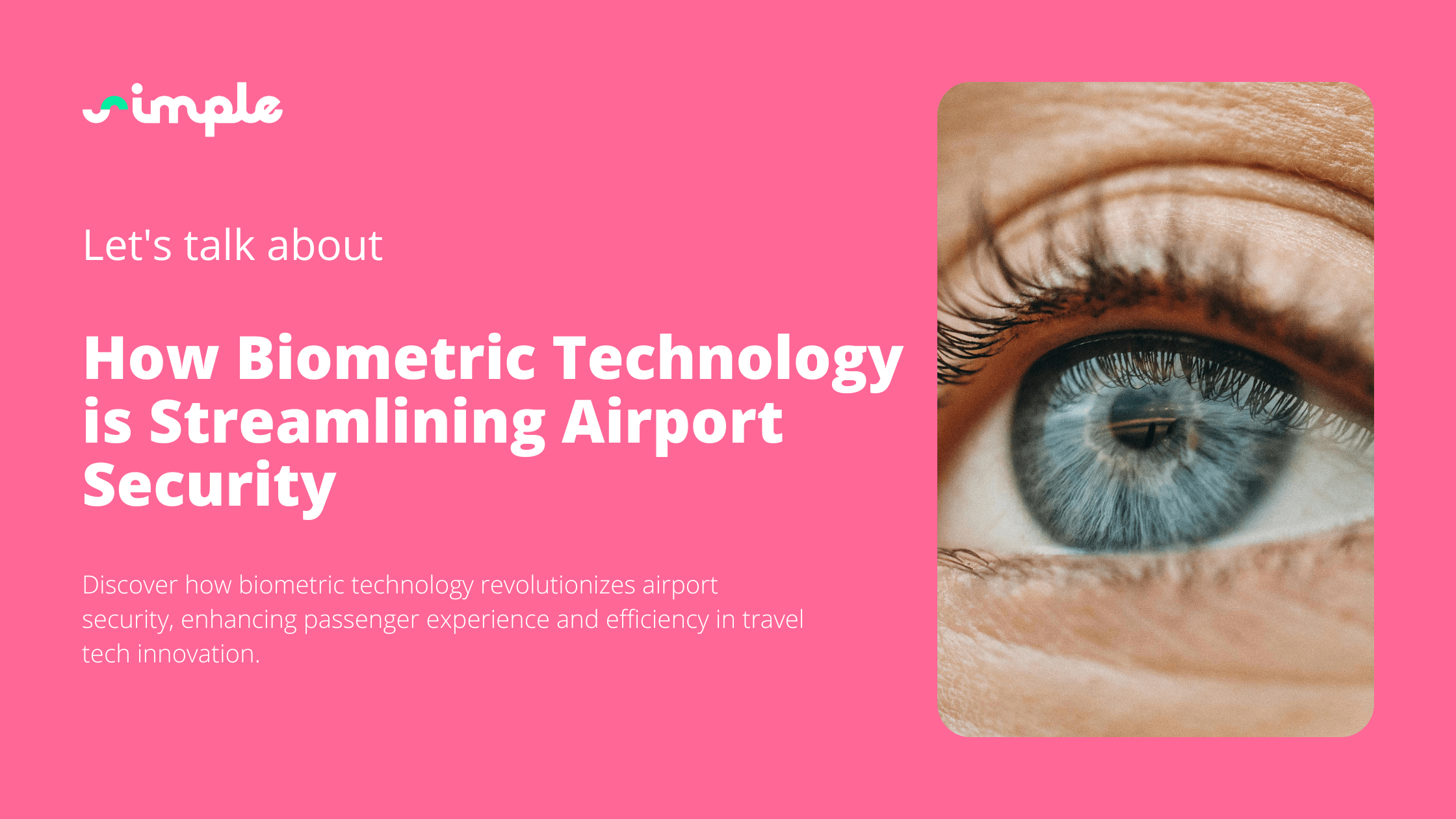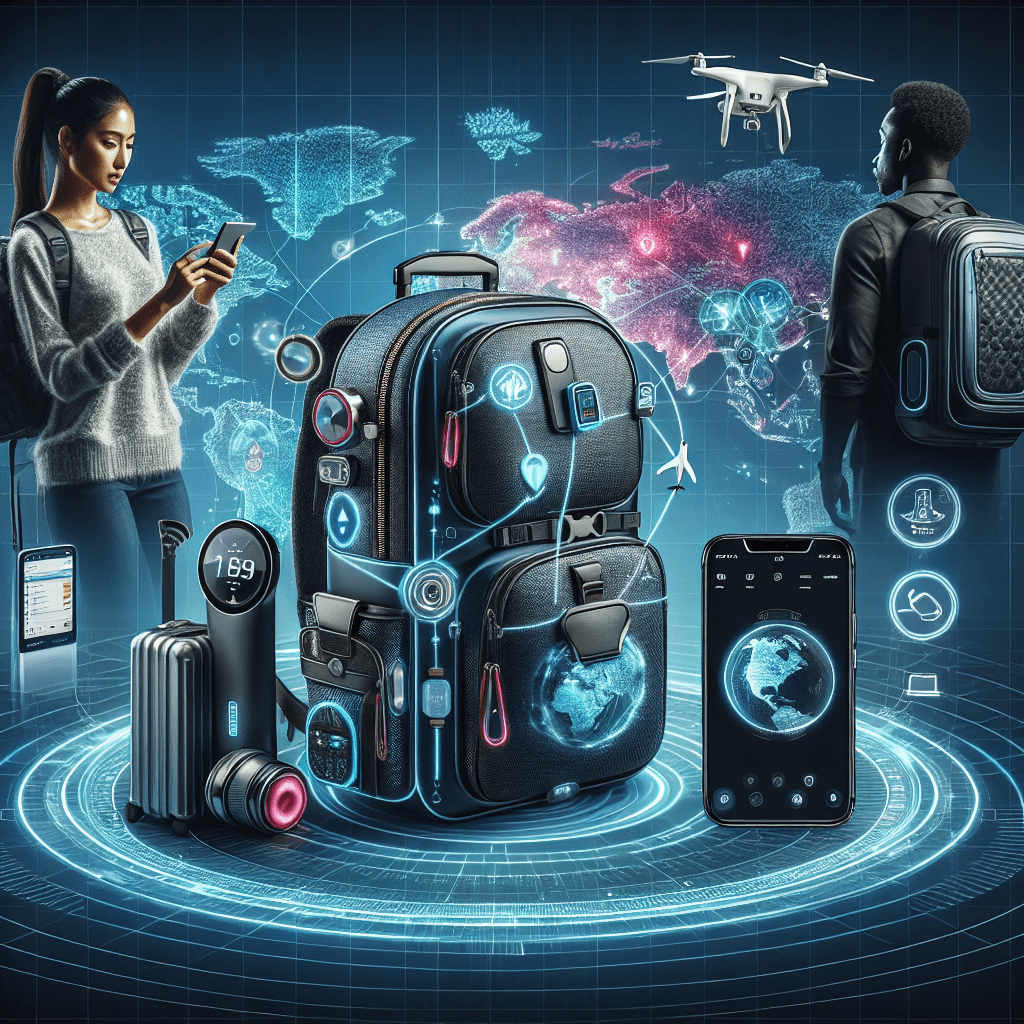How Biometric Technology is Streamlining Airport Security

In today’s fast-paced world, the integration of technology into the travel industry is not just a trend but a necessity. As the number of global travelers continues to rise, the demand for efficient and secure airport experiences has never been greater. Traditional airport security measures, often lead to long wait times and passenger frustration. These challenges highlight the need for innovative solutions that can enhance both security and the passenger’s comfort. Enter biometric technology ; a revolutionary advancement that is transforming the airport security. By using unique biological traits such as fingerprints, facial recognition, and iris scans, biometric systems offer an easy and highly secure method of verifying passenger identities. This new approach not only accelerates the security process but also reduces the risk of human error. As the travel industry continues to evolve, the adoption of biometric technology is poised to redefine the future of airport security, ensuring a smoother and more efficient journey for travelers worldwide. For more insights into how technology is reshaping the travel landscape, explore our comprehensive guide on travel tech.

Overview of Biometric Technology in Airports
Explanation of Biometric Systems and How They Work
Biometric technology is revolutionizing airport security by utilizing unique biological characteristics to verify identities. Commonly used (phones, computers…) biometric systems include facial recognition and fingerprint scanning. Facial recognition technology captures and analyzes facial features to create a digital map of a person’s face, which is then compared against a database for identity verification. Similarly, fingerprint scanning involves capturing the unique patterns of a person’s fingerprint to authenticate their identity. These systems are designed to be highly accurate and efficient, reducing the time passengers spend in security lines.
The evolution of biometric systems has been remarkable, with significant advancements in accuracy and speed. Initially, these technologies were limited to high-security areas, but their adoption has expanded to various airports worldwide. The integration of AI in the travel industry has further enhanced the capabilities of biometric systems, allowing for real-time data processing and improved accuracy. As a result, airports are increasingly adopting these systems to streamline security processes and enhance passenger experiences.
Advantages of Biometric Technology Over Traditional Security Methods
Biometric technology offers several advantages over traditional security methods, primarily in terms of accuracy and speed. Traditional methods often rely on manual checks and physical documents, which can be time-consuming and can lead to human error. In contrast, biometric systems provide a more accurate and efficient means of identity verification, significantly reducing wait times and enhancing the overall passenger experience.
One of the key benefits of biometric technology is its ability to minimize human error. By automating the identity verification process, biometric systems reduce the likelihood of security breaches caused by manual oversight. Additionally, these systems offer enhanced security by making it more difficult for individuals to use fraudulent documents or impersonate others. The use of travel data analytics further strengthens the security framework, allowing for the identification of potential threats in real-time.
Examples of Airports Successfully Implementing Biometric Technology
Several airports around the world have successfully implemented biometric technology, setting a benchmark for others to follow. A notable example is the use of facial recognition technology at Singapore’s Changi Airport. This leading airport has integrated biometric systems throughout its terminals, allowing passengers to check in, clear security, and board flights using facial recognition. The implementation has significantly reduced wait times and improved the overall passenger experience.
Customer feedback from airports utilizing biometric technology has been positive. Passengers appreciate the convenience and efficiency offered by these systems, which allow for a smoother and more streamlined travel experience. The adoption of contactless travel services, facilitated by biometric technology, has also been well-received, particularly in the wake of the COVID-19 pandemic. As more airports embrace these digital travel solutions, the future of air travel looks increasingly promising.

Security and Privacy Considerations
Addressing Concerns Regarding Data Security and Misuse
As biometric technology becomes more present in airports, concerns about data security and potential misuse have come to the forefront. Protecting the integrity of biometric data is primary, as this information is highly sensitive and personal. To address these concerns, robust measures are in place to ensure the security of biometric data. Encryption technologies are employed to safeguard data during transmission and storage, making it difficult for unauthorized parties to access or tamper with the information.
Regulatory frameworks play a crucial role in ensuring privacy and compliance with local laws. Many countries have established strict regulations governing the collection, storage, and use of biometric data. These regulations mandate that airports and technology providers adhere to strict data protection standards, ensuring that passenger information is handled responsibly. Compliance with these frameworks not only protects travelers but also builds trust in the use of biometric systems as a secure digital travel solution.
Balancing Technology Use with Travelers’ Rights and Freedoms
While biometric technology offers numerous benefits, it is essential to balance its use with travelers’ rights and freedoms. Transparency in the collection and use of biometric data is critical to maintaining public trust. Airports and technology providers must clearly communicate how biometric data is collected, stored, and used, ensuring that passengers are fully informed about the process.
Providing travelers with opt-out options and alternatives is another important consideration. While biometric systems can enhance the travel experience, passengers should have the choice to opt-out if they have privacy concerns. Offering alternative methods of identity verification, such as traditional document checks, ensures that travelers’ rights are respected. This approach not only addresses privacy concerns but also demonstrates a commitment to upholding individual freedoms in the face of advancing travel technology trends.
Collaborations Between Stakeholders to Improve Security
Improving security in the context of biometric technology requires collaboration between various stakeholders, including government agencies and the private sector. Government agencies play a vital role in establishing regulatory frameworks and setting standards for data protection. By working closely with technology providers and airports, they can ensure that biometric systems are implemented in a manner that prioritizes security and privacy.
The private sector, including travel tech startups and established technology companies, is instrumental in driving innovation and continuous improvement. By investing in research and development, these companies can enhance the capabilities of biometric systems and address emerging security challenges. Collaborations between stakeholders facilitate the sharing of knowledge and best practices, enabling the industry to adapt to technological advances and maintain robust security measures. As the travel industry continues to evolve, these partnerships will be essential in ensuring that biometric technology is used responsibly and effectively.

Future Outlook and Innovations
Emerging Trends in Biometric Technology for Airports
The future of biometric technology in airports is poised for significant advancements, driven by emerging trends and innovations. One of the most promising developments is the integration of biometric systems with other technologies such as Artificial Intelligence (AI) and the Internet of Things (IoT). AI in the travel industry enhances the accuracy and efficiency of biometric systems by enabling real-time data processing and decision-making. IoT devices, such as smart travel gadgets, can further streamline the passenger experience by connecting biometric systems with other airport services, creating a seamless and interconnected environment.
Beyond security, the potential for expanded use of biometric technology in additional areas is vast. For instance, biometric systems could be integrated into travel booking platforms and mobile travel apps, allowing for personalized and secure user experiences. This integration could extend to virtual travel experiences, where biometric data is used to tailor content and services to individual preferences. As these technologies continue to evolve, the possibilities for enhancing the travel experience are virtually limitless.
Predictions for the Impact of Biometric Technology on the Travel Industry
The long-term impact of biometric technology on the travel industry is expected to be transformative, offering numerous benefits for efficiency and cost reduction. By automating identity verification processes, airports can significantly reduce operational costs associated with manual checks and staffing. This efficiency translates into faster processing times, reducing congestion and improving the overall flow of passengers through airport terminals.
Enhanced passenger satisfaction is another key benefit of biometric technology. As travelers experience quicker and more secure processing, their trust in airport security measures is likely to increase. This trust is further bolstered by the implementation of contactless travel services, which have become increasingly important in the wake of global health concerns. As biometric technology becomes more widespread, it is expected to play a crucial role in shaping future travel technology trends, ultimately leading to a more streamlined and enjoyable travel experience.
Encouraging Innovation and Investment in Biometric Solutions
To fully realize the potential of biometric technology, fostering innovation and investment is essential. Partnerships between technology companies, airports, and government agencies can drive the development of innovative solutions that address current challenges and anticipate future needs. Research and development efforts, supported by investment from both the public and private sectors, are crucial for advancing biometric systems and ensuring their effectiveness and security.
International collaboration is also vital in standardizing practices and ensuring the interoperability of biometric systems across borders. By working together, countries can establish common standards and protocols that facilitate the seamless use of biometric technology in international travel. This collaboration not only enhances security but also promotes the adoption of digital travel solutions on a global scale. As the travel industry continues to evolve, the role of biometric technology will undoubtedly expand, paving the way for a more secure and efficient future.
Simplify Your Travels with SimpleVisa
Travel Made Easy: Fast & Hassle-Free Visa Processing
Planning an international trip can be exciting, but dealing with visa applications can often be time-consuming and complicated. SimpleVisa simplifies the process by offering a fast, secure, and user-friendly platform to help travelers obtain their visas with ease. Whether you’re traveling for business, leisure, or an urgent trip, SimpleVisa ensures a smooth application experience with minimal hassle.
As airports worldwide adopt advanced security measures like biometric technology, the travel industry is evolving to enhance both security and convenience.
For a seamless visa application experience, start your journey with SimpleVisa today: Apply Now

Conclusion
Biometric technology has emerged as a pivotal force in streamlining airport security, offering a blend of efficiency, accuracy, and enhanced passenger experience. By leveraging unique biological identifiers, such as facial recognition and fingerprint scanning, airports can significantly reduce wait times and improve the overall flow of passengers. This technology not only enhances security by minimizing human error and potential breaches but also aligns with the growing demand for digital travel solutions that prioritize convenience and safety. As the travel industry continues to embrace technological advancements, biometric systems are set to become an integral component of modern airport operations, driving a new era of secure and efficient air travel.